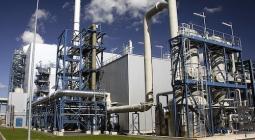One CCS Project Cancelled, Another One Failing as Industry Navigates Very Bad Week

Canada’s sputtering carbon capture and storage (CCS) industry sustained two serious setbacks in less than 48 hours this week, with one major project cancelled and a second subject to scathing criticism from independent analysts.
On Wednesday, Edmonton-based Capital Power announced it was giving up on a C$2.4-billion CCS project that was meant to capture up to three megatonnes of greenhouse gas emissions from its gas-fired Genesee generating station in Alberta. “Through our development of the project, we have confirmed that CCS is a technically viable technology,” the company said in its statement. “However, at this time, the project is not economically feasible.”
A day earlier, the Cleveland-based Institute for Energy Economics and Financial Analysis (IEEFA) declared the CCS installation at SaskPower’s Boundary Dam 3 coal plant an “underperforming failure”, achieving only a 57% capture rate after nine years in operation and $1 billion spent on the technology. “Canadians should not be proud of the money and resources wasted on CCS, and should be especially concerned about the billions of dollars now earmarked for additional CCS investments,” wrote analysts David Schlissel and Mark Kalegha.
‘Continuing Tensions’
Capital Power’s decision to walk away from its CCS plan for the Genesee plant “relates at least in part to continuing tensions between industry and the federal government about the extent to which public dollars will be used to provide revenue certainty for this form of decarbonization,” the Globe and Mail writes. Despite a generous investment tax credit in the 2022 federal budget, oil and gas executives have repeatedly demanded more, even as federal officials scorched them for refusing to invest their own record profits in emission reductions.
Although Capital Power wasn’t commenting on its decision this week, the Globe says Senior Vice-President Jason Comandante had previously been dissatisfied with the pace of negotiations around the Canada Growth Fund, a federal mechanism that is meant to use carbon contracts for difference (CCfD) to guarantee a reliable, long-term price for captured carbon.
“Ottawa has already committed to significant financial backing for carbon capture projects, by covering up to 50% of capital costs through a new investment tax credit, although there has been industry frustration with slowness in putting that measure into law,” the Globe says. “But Capital Power and other carbon capture proponents have argued that additional financial assurances are needed from government, because CCS facilities will have high operational costs, and otherwise lack a reliable revenue stream.”
Some observers interpreted Capital Power’s decision as evidence that governments have “failed to give emitters enough confidence that projects will pay off,” the Globe writes.
“These projects can still work,” said Clean Prosperity Executive Director Michael Bernstein, a leading advocate for CCfDs. “But the policy environment is not yet where it needs to be, including on contracts for difference, to put in place a strong signal to emitters that there is going to be a strong financial case for moving ahead.”
But Julia Levin, associate director, national climate at Environmental Defence Canada, said the Capital Power announcement underscored the high cost and complexity of CCS technology, adding that the project still wasn’t viable with the promise of federal and provincial funding.
“This decision is just the latest failure in carbon capture’s terrible track record,” she said in a release. “It should serve as a lesson for governments on how reckless it is to be using taxpayer dollars to subsidize these projects.”
Poor Performance
The IEEFA analysis shows the CCS system at Boundary Dam capturing just 57% of the carbon dioxide from the coal plant to which it’s attached, just under two-thirds of the 90% the project has consistently promised. Moreover, “all the carbon dioxide (CO2) captured at the plant is used for enhanced oil recovery (EOR) that injects captured CO2 into the ground to extract more oil,” Schlissel and Kalegha write.
By the end of last year, the two analysts report, SaskPower data showed Boundary Dam capturing less than 5.8 million tonnes of CO2, far below the 9.2 million tonnes that would have fulfilled its promise of 90% capture. They cite a paper published by the provincial utility and the International CCS Knowledge Centre that acknowledged the shortfall in 2022.
Knowledge Centre spokesperson Grady Semmens told The Canadian Press that IEEFA’s analysis was “generally correct”, but maintained that didn’t make the Boundary Dam CCS project a failure.
“For a variety of technical and economic reasons… the facility has not been run at full capacity, which has impacted the overall volume of CO2 captured over the last 10 years,” but “this does not mean the project has not been successful,” he wrote in an email. “It has provided valuable experience and lessons that we are now actively applying to the next generation of CCS projects.”
“The knowledge we’ve gained [at Boundary Dam] has also made SaskPower a resource for development of projects in a wide range of industries outside of power generation, such as cement manufacturing, oil and gas production, and chemical processing,” added SaskPower spokesperson Scott McGregor.
But to fulfill its proponents’ claims that CCS can actually help reduce the greenhouse gas emissions driving the global climate emergency, Schlissel said projects like Boundary Dam would have to work nearly perfectly all the time.
“If you’re going to try to reduce greenhouse gas emissions by capturing CO2, you’ve got to capture almost all the emissions and you’ve got to do it year in and year out for decades,” he told CP. “Carbon capture hasn’t done what its proponents claimed it would do.”
In October, the International CCS Knowledge Centre admitted the technology won’t be ready in time to meet the 2035 decarbonization goals in Canada’s draft Clean Electricity Regulations—even though they’re much the same targets Canadian CCS proponents first promised nearly a decade ago.
“This blows my mind,” Schlissel told The Energy Mix at the time. “It’s hypocritical. These guys have been hyping 90%, 95% capture, and now it’s, ‘well. we really can’t do it that fast, it’s not tested, it’s not certain’.”






